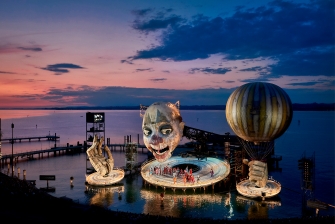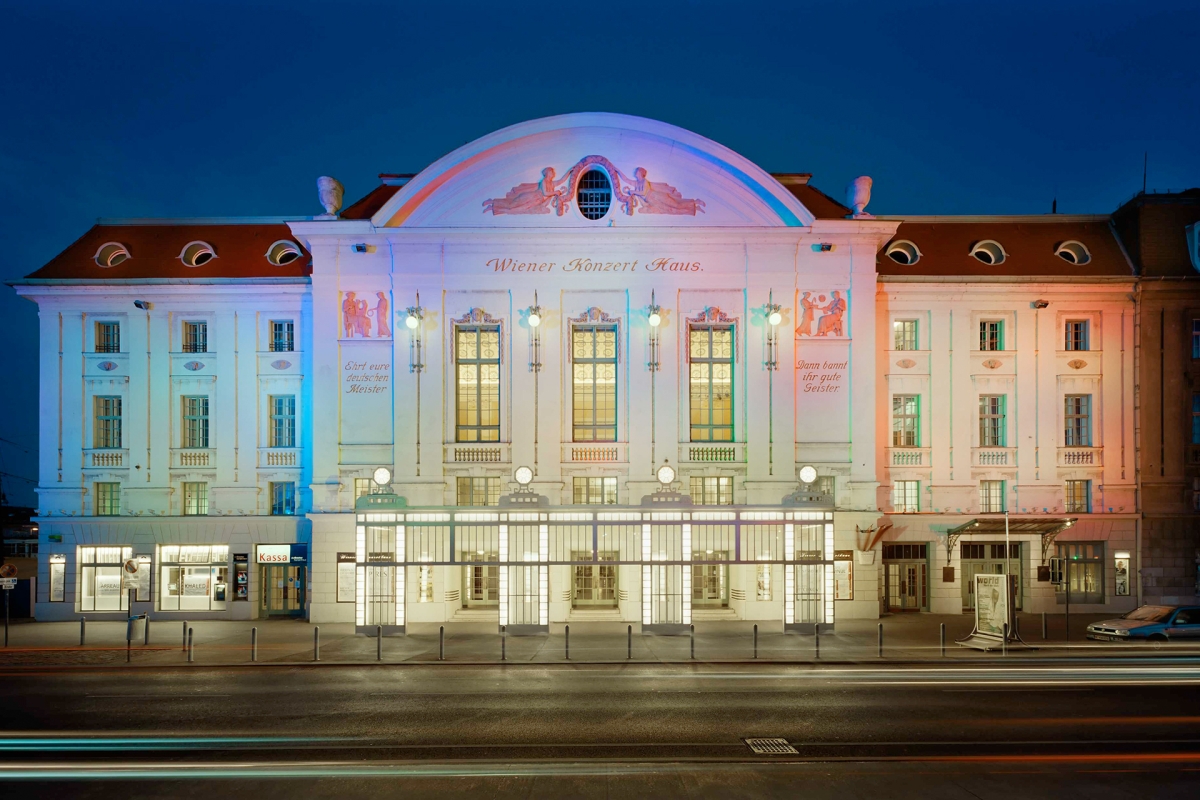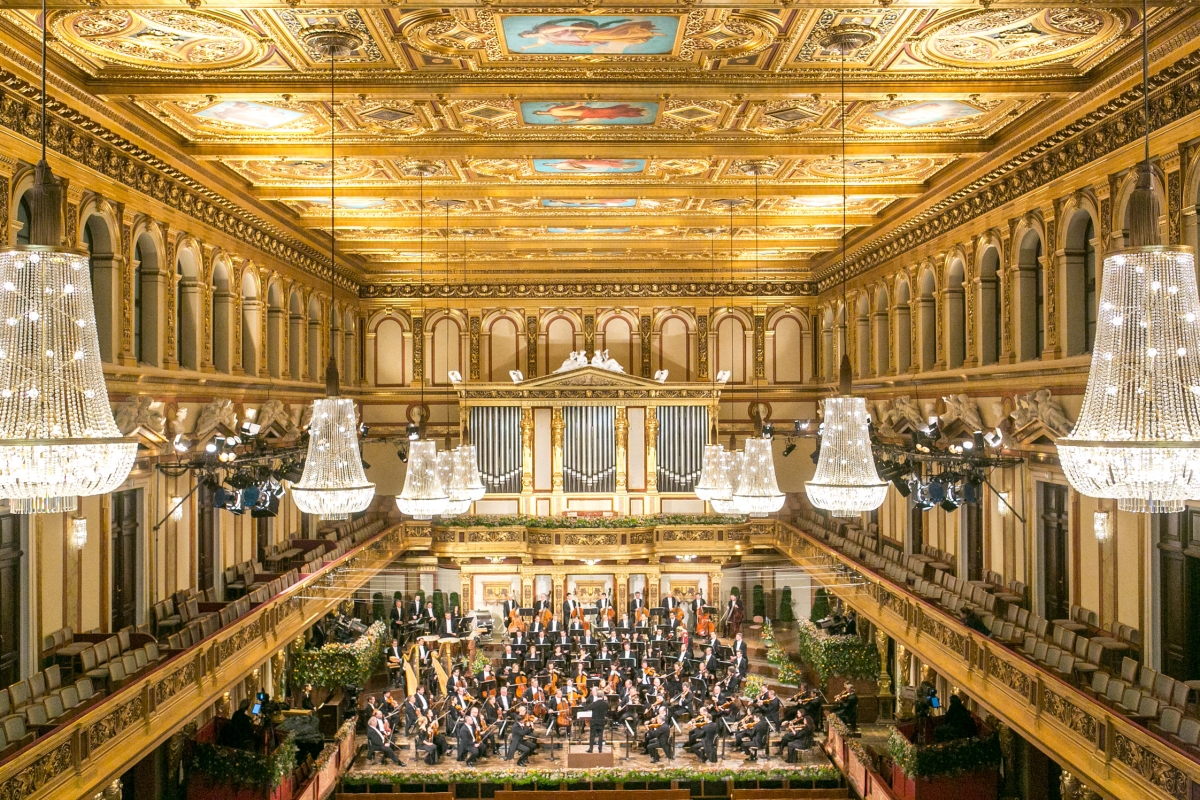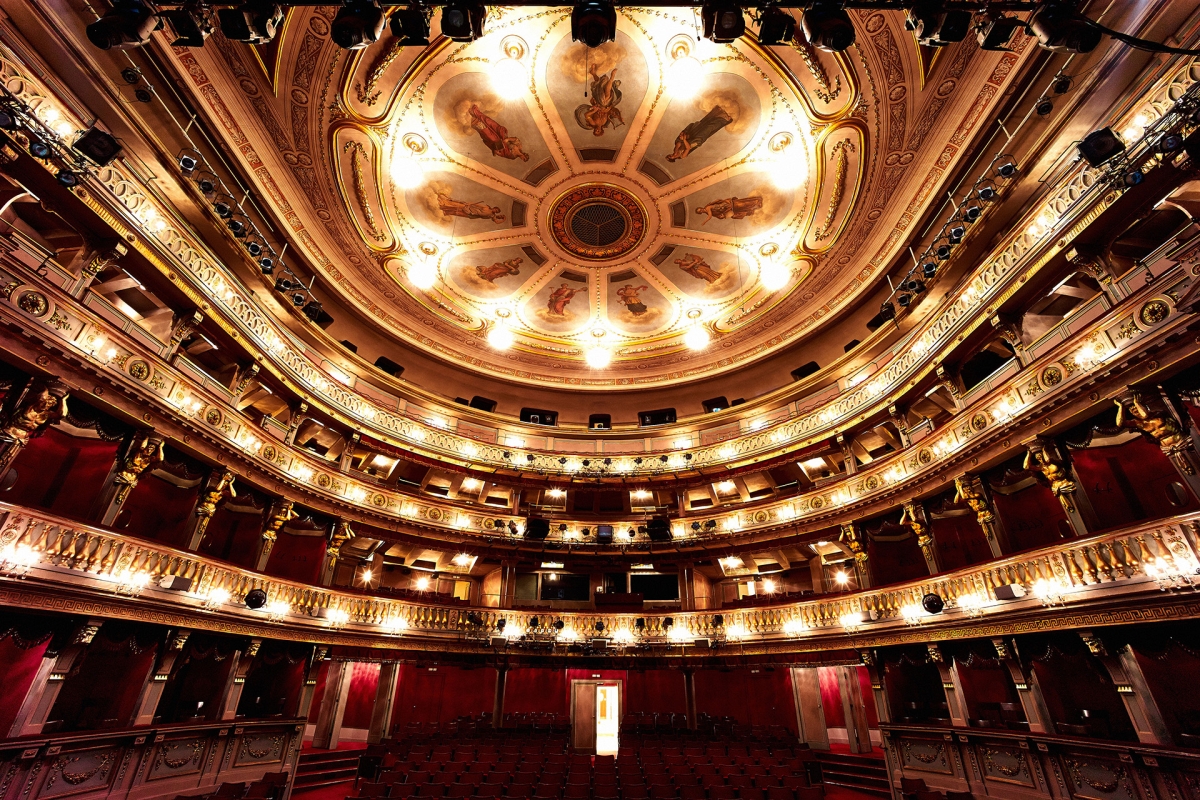Bregenzer Festspiele
Bregenzer Festspiele

The Wiener Symphoniker have been the orchestra in residence at the Bregenz Festival every summer since 1946. They not only perform as the opera orchestra at the Spiel am See and the opera in the Festspielhaus, but are also represented in the festival programme with several orchestral concerts.
The beginnings
As always in such cases, the partnership came about by chance: in August 1946, the orchestra undertook a "trip to Austria", which led to Innsbruck, Jenbach Kufstein and (as the first stop!) to Bregenz, where two concerts, conducted by Hans Swarowsky and Otmar Suitner respectively, took place as part of a "festival week". There was still no lake stage, which was only installed on the legendary gravel barges at the gondola harbour in 1947 and opened with The Abduction from the Seraglio. In bad weather, the performance was given in the equally legendary Stadthalle, which was built by the French occupying forces for the purpose of sports training. The first orchestral concerts also took place there, with Clemens Krauss conducting a programme including The Unfinished, Don Juan and Pictures at an Exhibition in 1947.
Bregenz was a lucrative location for the musicians of the Wiener Symphoniker in the immediate post-war period, as there was no shortage of food - they were prepared to make a day-long journey. Some of the musicians were accommodated in farms in the Vorderer Bregenzerwald and were able to feast in comparison to the conditions at home. In terms of cultural policy, the Vienna-Bregenz axis, symbolised by the presence of a Viennese orchestra for several weeks every year, was of particular relevance, as Vorarlberg, as a remote province that was difficult to reach from the east in terms of transport, had a constant desire for separation and dreams of joining Switzerland.
Basically, the performance conditions in Bregenz remained the same until 1979; from the late 1950s, the restored Kornmarkttheater was added as a venue for in-house operas. The extremely limited space available on stage and in the auditorium determined the artistic programme: in cooperation with La Scala in Milan, an Italian Staggione was staged every year from the 1960s with very good forces, mainly buffo operas from the Rossini-Donizetti era were given, but a prominently cast Falstaff in 1968 under the direction of Vittorio Gui also went down in festival history - which brings us to the opening season of the new festival theatre, as the unforgettable Giuseppe Taddei embodied the title role in both 1968 and 1980.
A new era begins
Under new circumstances, old concepts were continued for some time: the "Italian Staggione" was also initially continued at the Festspielhaus. In 1981 it was Otello - Placido Domingo (with Anna Tomowa-Sintow as his partner) sang this role in Austria for the first time, albeit only for half of the performances, and Nello Santi marked the entire part from the conductor's podium at the main rehearsal. Lucia di Lammermoor followed in 1982 with another star tenor: José Carreras. Contrary to all expectations, Pavarotti did not appear in 1983, but Giacomo Aragall did in 1984 together with Mara Zampieri in Tosca - 23 years later, this work was to move to the lake stage. Edita Gruberova celebrated triumphs in Donizetti's I Puritani, and the "Staggione era" came to an end with Anna Bolena in 1986 and Ernani in 1987.
Change in the artistic programme
Alfred Wopmann subsequently brought about a fundamental change in the artistic programme. Samson and Dalila was to the theatre what Die Zauberflöte was to the lake in 1985/86: a shift in focus to lesser-known operas of the late 19th and early 20th centuries, modern lighting direction and character management, spectacular stage effects. Marjana Lipovsek celebrated an overwhelming success, which prompted the management team to repeat this production in 1989. Interest increasingly shifted to interesting directorial works, with Harry Kupfer in particular staging two brilliant productions in the 1990s: Berlioz' La Damnation de Faust in 1992 and Die Legende von der unsichtbaren Stadt Kitesch by Rimsky-Korsakov in 1995, both conducted by Vladimir Fedoseyev.
In 1993/94, the orchestra had its first encounters with a very talented young conductor in the performances of Giordano's Fedora and Zandonai's Francesca da Rimini: Fabio Luisi. Almost every year in this phase could be categorised as remarkable in terms of house opera production; perhaps Martinu's operas Griechische Passion (1999, conductor Ulf Schirmer, staging: David Pountney) and Julietta (2002, conductor Dietfried Bernet, staging: Katja Czelnik) as well as Janacek's Schlaues Füchslein (2003, conductor Vladimir Fedosejev, staging: Daniel Slater) stand out from the consistently high standard.
As already mentioned, Jerome Savary's production of Die Zauberflöte represented a "paradigm shift" on the lake stage, not least because of the enormous increase in the amount of work involved in stage design and directing. From this point on, each production was shown for two festival seasons for amortisation reasons alone. From the orchestra's perspective, however, these spectacles are far behind the artistically interesting house operas. Until 2006, it was exposed to the vagaries of the weather under the lake stage (either blistering heat or freezing cold), and contact with the stage was naturally only possible via loudspeakers. From the audience's and critics' point of view, however, some productions proved to be outstanding: Der fliegende Holländer 1989/90, for example (Schirmer/Pountney), above all Nabucco (1993/94, Schirmer/Pountney) with the unforgettable thunderstorm scene during the prisoners' chorus at the dress rehearsal, but also Porgy and Bess 1997/98 (staged by Götz Friedrich). Un ballo in maschera (1999/2000) brought another "quantum leap" with its suggestive stage design - from this point onwards, the success of a production was determined above all by the successful development of a visual symbol that condensed the plot. This was achieved just as convincingly in La Boheme (2001/02, where the still relatively unknown Rolando Villazon made his debut as Rudolfo) as in West Side Story (2003/04) and Tosca (2006/07).
Triumphant orchestral concerts
As far as the concerts were concerned, the opening concert of the Festspielhaus in 1980 went down in orchestral annals: Karl Böhm performed with the Wiener Symphoniker for the last time (Beethovens 9th Symphony). It was less the musical quality than the dramatic circumstances of this concert that will be remembered, as Böhm was only able to cope with the rigours of rehearsals with constant medical care, and in the final movement of the performance at the latest, concertmaster Arve Teleffsen practically took over the baton. Perhaps the most sensational concert of the last three decades was conducted by Georges Prêtre in the summer of 1983 - his interpretation of La mer and the Symphonie fantastique made orchestral history. The performances of the old Erich Leinsdorf in 1987 and 1988 are also memorable, as are some impressive concerts with Vladimir Fedosejev - even in his "pre-principal conductor days" in the early 1990s.
Contact
Bregenzer Festspiele
Platz der Wiener Symphoniker 1
6900 Bregenz
Telefon: +43 5574 407-6
Website: www.bregenzerfestspiele.com


